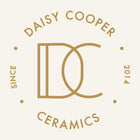New Wave Clay, published by Frame Publishers (Amsterdam) in 2018, is the third book by London-based writer, design editor and consultant Tom Morris. An authentic selection of 55 artists, designers, architects and makers around the world, representing a new wave which brings a fresh perspective to clay work. It includes some work made in polymer clay, and it shows a wide variety of uses for glaze, colours, shapes, additional -non clay- materials, texture, and scale. This book is by all means an attractive and inspiring approach to contemporary clay work.
What’s the book about?
New Wave Clay introduces the reader to the work of some very imaginative makers who are thinking out of the box when using clay as a building material.
The book is divided into four main chapters: Joy, the first of these chapters, explores the playfulness of colours, shapes and composition in the work of some very audacious contemporary ceramic makers. Artists like Ahryun Lee, The Haas Brothers, Takuro Kuwata, and designer Ashley Hicks are included in this section..
The second chapter is titled Simplicity, and it dives into the work of a selection of makers including Maria Kristofersson, Julia Haft-Candell, and Akiko Hirai, among others, who work with the concept of austerity and simplicity when it comes to shapes, colours and use of materials. Nevertheless, even if the work selected for this chapter is based on aesthetical simplicity, there is some outstanding complexity and sophistication in the making of, for example, the work of Korean artist Jongjin Park, who uses a technique of layering thousands of kitchen papers painted with porcelain slip to create his sculptures. Or Olivier Van Herpt’s 3D-printing with clay. There is also some remarkable patience and skill in the work of Fenella Elms.
The third chapter, titled Structure, explores the architectural approach of hand-built ceramic work. Leaving aside pottery and its traditional utilitarian means, Structure focuses on work that uses clay as a tool for creating an architectonic interaction with the space. This interaction is given either by working with industrially made or building materials, or by following the idea of mechanical repetition and the imitation of machinery and geometrical shapes. The large scale of some of these ceramic pieces also create a particular interaction between the space and the object. There are some very interesting works by Cody Hoyt, Ben Medansky, Mia E Göransson, and Studio Furthermore.
And lastly, Nostalgia presents the reader with a selection of makers who appropriate vernacular pottery techniques and aesthetics into their work in modern times. It is quite impressive to see the work of Hitomi Hosono and her mastering of carving and hand building, the use of slip casting in Charlotte Mary Pack’s porcelain creatures, and the re-interpretations of Classical sculptures by Zachary Eastwood-Bloom.
What do we like about this book?
We think that the book gives such a refreshing view of contemporary clay work, in a variety of interpretations on what could be done with this material. It holds great value for people that work with clay themselves, both as an inspirational guide as well as a technical reference. Between the four chapters there’s conversations with artists and designers, as well as essays on art, architecture, and art collections.
We love all the images, nearly all of them in full-page, with great detail and edition. The text is also a concise introduction to each artist, and next to the images there’s always a section detailing the type of clay body, glazes and techniques used by them. A complete and concrete overview of each artist’s work.
Where can you find this book?
You can buy this book on most bookstores around Melbourne (and probably around Australia), or online through the Australian Ceramics’ website, Amazon, and Booktopia.





